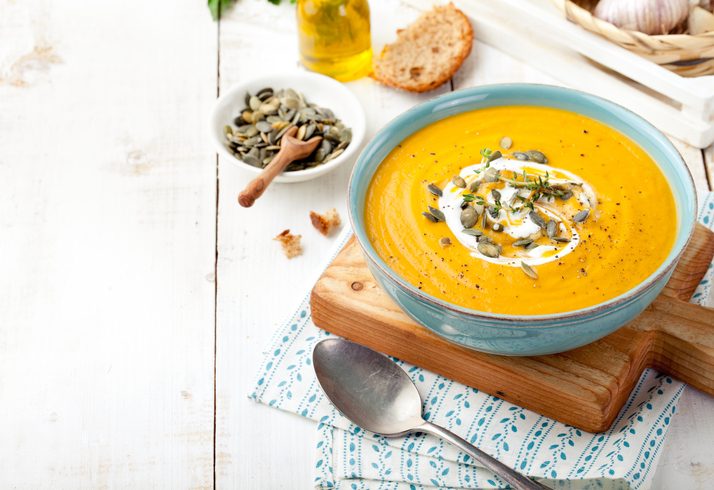Gout and Pseudogout
Gout and Pseudogout
Gout and Pseudogout
If you have sudden flares of pain and swelling in your joints, you may have gout or pseudogout. Gout usually happens in your big toe. Pseudogout typically happens in other joints.
They both happen because of crystals in your joints. That’s why doctors call both “crystal-induced arthritis." The crystals cause inflammation and pain in the joints. The rheumatologists at Carilion Clinic offer expert care for these diseases.
If you have sudden flares of pain and swelling in your joints, you may have gout or pseudogout. Gout usually happens in your big toe. Pseudogout typically happens in other joints.
They both happen because of crystals in your joints. That’s why doctors call both “crystal-induced arthritis." The crystals cause inflammation and pain in the joints. The rheumatologists at Carilion Clinic offer expert care for these diseases.
Gout is a type of inflammatory arthritis that causes sudden, painful flare-ups in the joints. It can cause swelling, redness, heat and severe pain—most often in the big toe, but gout can affect other joints too.
Gout develops because your body has too much uric acid. Uric acid comes from the breakdown of purines, a substance that’s in many foods. The uric acid, or urate, can form into crystals around the joint. This inflames the joint.
Gout usually happens in flares, and they often start suddenly at night. Gout can affect any joint, but for most people, it happens in one of their big toes.
Gout targets the big toe because:
- Uric acid crystallizes in cool temperatures. Because your big toe is furthest from your heart, it’s cooler than other joints.
- Your big toe has to deal with a lot of joint pressure from walking and standing.
Drinking, eating certain foods and illness can trigger a gout flare. Many people will recover from a flare within a week or so. Some people may have flares more frequently, and they may last longer.
What Is Gout?
Gout is a type of inflammatory arthritis that causes sudden, painful flare-ups in the joints. It can cause swelling, redness, heat and severe pain—most often in the big toe, but gout can affect other joints too.
Gout develops because your body has too much uric acid. Uric acid comes from the breakdown of purines, a substance that’s in many foods. The uric acid, or urate, can form into crystals around the joint. This inflames the joint.
Gout usually happens in flares, and they often start suddenly at night. Gout can affect any joint, but for most people, it happens in one of their big toes.
Gout targets the big toe because:
- Uric acid crystallizes in cool temperatures. Because your big toe is furthest from your heart, it’s cooler than other joints.
- Your big toe has to deal with a lot of joint pressure from walking and standing.
Drinking, eating certain foods and illness can trigger a gout flare. Many people will recover from a flare within a week or so. Some people may have flares more frequently, and they may last longer.
Pseudogout is another type of inflammatory arthritis that causes sudden joint pain and swelling, similar to gout. Pseudogout most often affects larger joints like the knees or wrists, but it can also involve the shoulders, ankles or hips.
It happens when calcium pyrophosphate (CPP) crystals build up in the cartilage that cushions your joints. These crystals irritate the joint lining and trigger painful flares.
Doctors still aren’t sure why some people make extra CCP. It also isn’t clear what triggers a flare of pseudogout. The flares can last a few days, but are longer for some people.
People with gout can also develop pseudogout.
What Is Pseudogout?
Pseudogout is another type of inflammatory arthritis that causes sudden joint pain and swelling, similar to gout. Pseudogout most often affects larger joints like the knees or wrists, but it can also involve the shoulders, ankles or hips.
It happens when calcium pyrophosphate (CPP) crystals build up in the cartilage that cushions your joints. These crystals irritate the joint lining and trigger painful flares.
Doctors still aren’t sure why some people make extra CCP. It also isn’t clear what triggers a flare of pseudogout. The flares can last a few days, but are longer for some people.
People with gout can also develop pseudogout.
We diagnose both conditions in many of the same ways. We will:
- Ask about your medical history and past flares
- Examine the joints causing your pain
- Take a fluid sample from the painful joint to look for crystals
- A special CT scan to look for uric acid crystal buildup in the joint
Diagnosing Gout and Pseudogout
We diagnose both conditions in many of the same ways. We will:
- Ask about your medical history and past flares
- Examine the joints causing your pain
- Take a fluid sample from the painful joint to look for crystals
- A special CT scan to look for uric acid crystal buildup in the joint
There’s no cure for either gout or pseudogout, but there are ways to relieve symptoms. We treat both conditions in many of the same ways.
At Carilion, our goal is to:
- Reduce your pain from flares
- Prevent future flares
- Prevent or slow joint damage
- Treat any related conditions, like heart or kidney problems
Medicines
The medicine you take depends on how severe your gout or pseudogout is, and may include:
- Anti-inflammatories: These medicines can help relieve joint pain by lowering inflammation.
- Corticosteroids: Can also help with pain and inflammation in the short term. These drugs can have side effects, so your doctor will manage your dose carefully.
- Colchicine: Which helps relieve pain from gout and pseudogout.
The main difference between treating gout and pseudogout is that we don’t have a medicine to stop the buildup of CCP. But there is medicine that can help lower urate levels. These include medicines that can:
- Keep your body from making too much urate
- Helps your kidneys flush extra urate
- Break urate down so it’s easier for your body to get rid of
How We Treat Gout and Pseudogout
There’s no cure for either gout or pseudogout, but there are ways to relieve symptoms. We treat both conditions in many of the same ways.
At Carilion, our goal is to:
- Reduce your pain from flares
- Prevent future flares
- Prevent or slow joint damage
- Treat any related conditions, like heart or kidney problems
Medicines
The medicine you take depends on how severe your gout or pseudogout is, and may include:
- Anti-inflammatories: These medicines can help relieve joint pain by lowering inflammation.
- Corticosteroids: Can also help with pain and inflammation in the short term. These drugs can have side effects, so your doctor will manage your dose carefully.
- Colchicine: Which helps relieve pain from gout and pseudogout.
The main difference between treating gout and pseudogout is that we don’t have a medicine to stop the buildup of CCP. But there is medicine that can help lower urate levels. These include medicines that can:
- Keep your body from making too much urate
- Helps your kidneys flush extra urate
- Break urate down so it’s easier for your body to get rid of
From routine care to complex conditions, we’re experts at diagnosing and treating a range of autoimmune problems. People from across Virginia and neighboring states have come to trust Carilion rheumatologists.

Fast referrals
We’ve simplified our referral process and are usually able to get back to you within a week. A Carilion rheumatologist reviews every referral.

Community participation
We work with the Arthritis Foundation and the Lupus Foundation of America and participate in local events. We’re also involved in advocacy through the Virginia Society of Rheumatology and the American College of Rheumatology.
Why Choose Carilion Clinic?
From routine care to complex conditions, we’re experts at diagnosing and treating a range of autoimmune problems. People from across Virginia and neighboring states have come to trust Carilion rheumatologists.
Health and Wellness

Healing Arts: A Vital Addition to Patient Care

Butternut Squash Soup

Depression in Men: Don't Ignore the Signs
Get Care at Carilion Clinic
Treating the people of western Virginia for more than 70 years, we’re proud to continue bringing the latest rheumatology treatments to our community. We’re working to make it easier than ever to connect with us and find the care you need.
Get Care at Carilion Clinic
Treating the people of western Virginia for more than 70 years, we’re proud to continue bringing the latest rheumatology treatments to our community. We’re working to make it easier than ever to connect with us and find the care you need.
Get Care at Carilion Clinic
Treating the people of western Virginia for more than 70 years, we’re proud to continue bringing the latest rheumatology treatments to our community. We’re working to make it easier than ever to connect with us and find the care you need.
Get Care at Carilion Clinic
Treating the people of western Virginia for more than 70 years, we’re proud to continue bringing the latest rheumatology treatments to our community. We’re working to make it easier than ever to connect with us and find the care you need.


